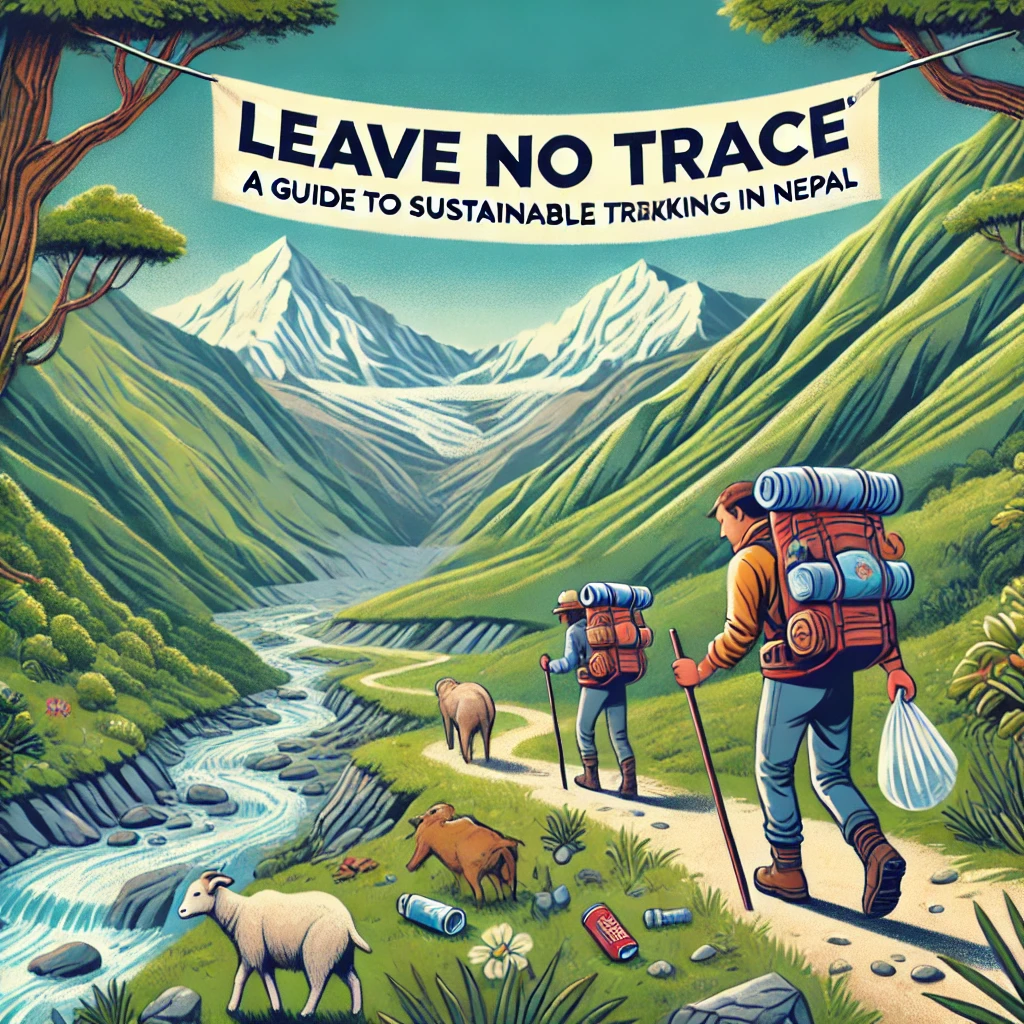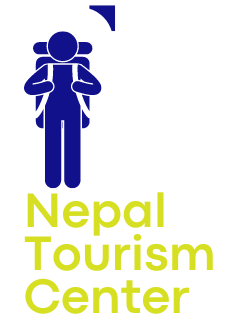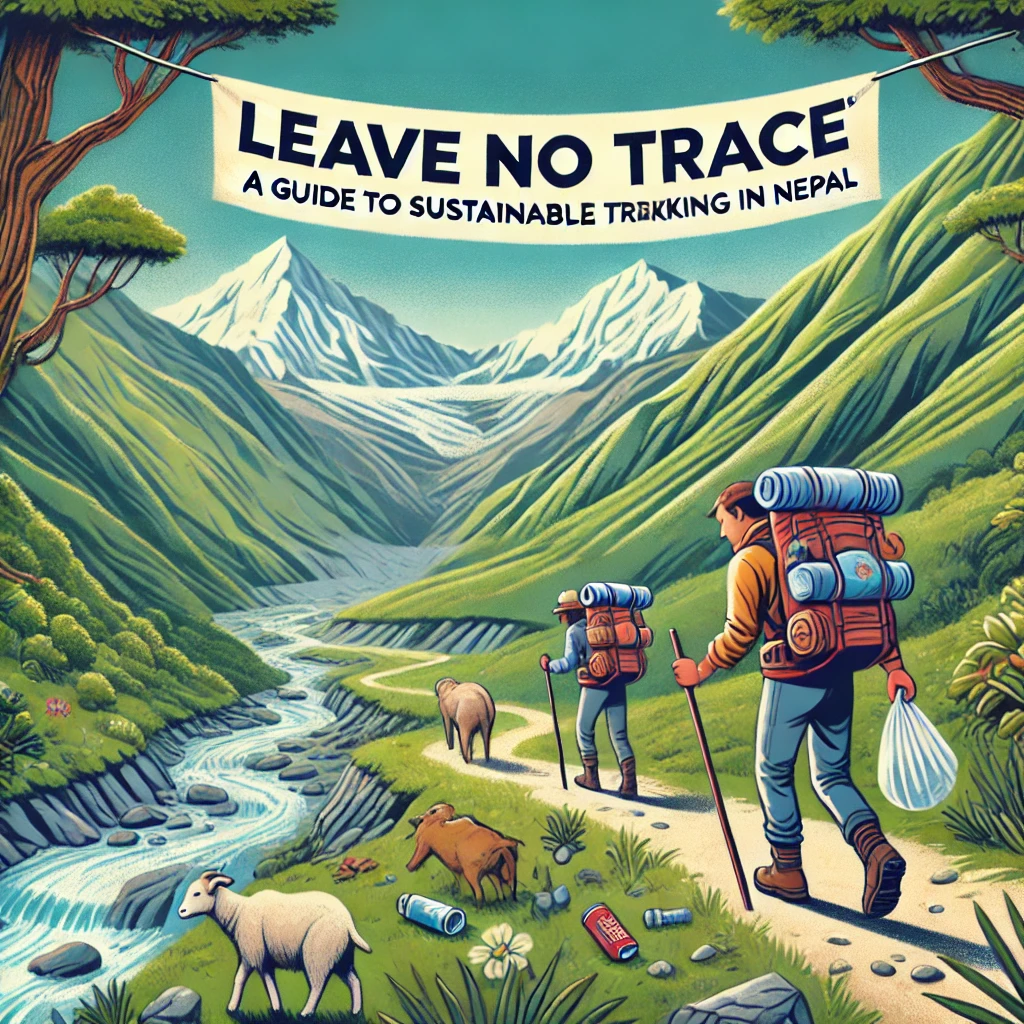Nepal, home to the majestic Himalayas, lush valleys, and vibrant cultures, is a trekker’s paradise. However, the increasing popularity of trekking has brought environmental challenges, including littering, trail degradation, and ecosystem disturbances. The Leave No Trace (LNT) principle is an essential framework for ensuring that the natural beauty of Nepal remains pristine for future generations. This blog explores how to practice Leave No Trace while trekking in Nepal, helping you become a responsible adventurer.

What is the Leave No Trace Principle?
The Leave No Trace principle is a set of guidelines designed to minimize human impact on natural environments. Originally developed by the Leave No Trace Center for Outdoor Ethics, these principles are globally recognized and highly relevant for trekking in Nepal. They encompass seven core principles:
- Plan Ahead and Prepare
- Travel and Camp on Durable Surfaces
- Dispose of Waste Properly
- Leave What You Find
- Minimize Campfire Impact
- Respect Wildlife
- Be Considerate of Other Visitors
Applying Leave No Trace Principles in Nepal
1. Plan Ahead and Prepare
Proper preparation is key to reducing environmental impact. Research the region you’ll be trekking, including its rules and regulations. In Nepal, national parks like Sagarmatha and Annapurna have specific guidelines to protect their fragile ecosystems. Hire local guides who understand sustainable trekking practices, and pack reusable items such as water bottles, utensils, and bags to minimize single-use plastics. Preparing adequately also ensures your safety, especially when trekking in remote or high-altitude regions where emergencies can have a greater impact on local resources.
By checking weather conditions, permits, and trail updates, you can avoid unexpected disruptions. Additionally, consider traveling during the off-season to reduce overcrowding on popular trails.
2. Travel and Camp on Durable Surfaces
Stick to designated trails and campsites to prevent soil erosion and vegetation damage. In Nepal, off-trail trekking can disrupt wildlife habitats and harm delicate alpine plants. Use established teahouses or authorized camping areas to reduce your footprint. When camping, set up your tent on durable surfaces like gravel, dry grass, or packed soil to minimize environmental impact.
Durable surfaces also include areas that show signs of previous use. Avoid creating new paths or campsites, as this can lead to unnecessary disturbance of the landscape. Responsible travel and camping habits help preserve the trails for future trekkers.
3. Dispose of Waste Properly
Carry all your trash, including biodegradable waste, as decomposition is slow in high-altitude areas. Use portable toilets or designated restroom facilities. In Nepal, programs like the Sagarmatha Pollution Control Committee (SPCC) provide waste disposal services on popular routes. Support these initiatives by properly managing your waste and encouraging others to do the same.
Plastic waste is a significant issue in Nepal’s trekking regions. Consider avoiding packaged snacks and instead bring homemade or bulk-purchased items to reduce plastic use. If you come across litter left by others, take the initiative to clean it up as a contribution to preserving the environment.
4. Leave What You Find
Nepal’s trails are rich in cultural and natural artifacts, from ancient prayer flags to rare flowers. Admire these treasures but leave them untouched. Removing rocks, plants, or cultural items disrupts the environment and disrespects local traditions. The beauty of Nepal lies in its untouched landscapes and the harmony of its cultural and natural heritage.
Photography is a great way to capture memories without disturbing the environment. Ensure your actions respect the cultural and religious significance of items and areas, such as monasteries, stupas, and shrines along the trails.
5. Minimize Campfire Impact
Fires can deplete scarce wood resources and scar the landscape. Instead, use portable stoves for cooking. Many teahouses in Nepal provide meals, reducing the need for outdoor cooking altogether. Additionally, collecting firewood is often prohibited in protected areas to preserve local vegetation and wildlife habitats.
Portable stoves are efficient and convenient, allowing you to enjoy warm meals without harming the environment. If you must use a fire, do so only in areas where it is permitted and ensure it is fully extinguished before leaving.
6. Respect Wildlife
Nepal is home to unique wildlife, including the red panda, snow leopard, and Himalayan tahr. Observe animals from a distance and never feed them. Feeding wildlife alters their natural behavior and diet, which can be harmful in the long term. It can also lead to human-wildlife conflicts, putting both animals and people at risk.
While trekking, avoid loud noises or sudden movements that may startle animals. Stick to trails to minimize habitat disruption and educate yourself about the local fauna to better understand how to coexist peacefully.
7. Be Considerate of Other Visitors
The trails in Nepal are shared by trekkers, locals, and livestock. Yield to porters carrying heavy loads, greet fellow trekkers with respect, and avoid making loud noises that disturb the serenity of the environment. Maintaining positive interactions ensures everyone enjoys their experience. Showing courtesy to others, especially those who live and work in the region, fosters a sense of community and respect.
When trekking in groups, ensure your actions do not overwhelm the trail or campsites. Smaller groups often have a lower environmental impact and allow for a more intimate connection with nature.
Additional Tips for Sustainable Trekking in Nepal
- Support Local Communities: Choose locally owned teahouses and purchase locally made goods. This contributes to the economy and promotes sustainable tourism. Interacting with locals provides a deeper understanding of the culture and enriches your trekking experience.
- Use Eco-Friendly Products: Opt for biodegradable soap, sunscreen, and insect repellents to reduce chemical pollution. These products are especially important in areas with limited water resources, where contaminants can quickly accumulate.
- Participate in Clean-Up Drives: Join or support initiatives like “Clean Up Nepal” that focus on maintaining the trails. These programs often organize events to clear litter and educate travelers about sustainable practices.
- Educate Others: Share the importance of Leave No Trace principles with fellow trekkers and inspire them to adopt sustainable practices. Leading by example can have a ripple effect, encouraging more people to tread lightly.
Why Leave No Trace Matters in Nepal
Nepal’s diverse ecosystems are incredibly fragile. The rapid increase in tourism poses risks to its natural and cultural heritage. Practicing Leave No Trace ensures that the Himalayas remain unspoiled, preserving their beauty and biodiversity for future generations.
The Himalayas are not only a natural wonder but also a spiritual and cultural beacon for millions. By trekking responsibly, you honor the people who call these mountains home and ensure that future adventurers can experience the same awe-inspiring landscapes.
By adopting these principles, you contribute to a global movement of responsible travelers. Whether you’re exploring the Annapurna Circuit, trekking to Everest Base Camp, or venturing into less-traveled regions, your actions can make a significant difference. Responsible tourism is about more than just enjoying the scenery; it’s about preserving it.
Conclusion
Trekking in Nepal is an unforgettable adventure, but with great privilege comes great responsibility. Embracing the Leave No Trace principle is not just about environmental conservation; it’s about respecting the land, its people, and its heritage. By planning thoughtfully and acting responsibly, you ensure that Nepal’s breathtaking landscapes remain a source of inspiration for generations to come.
Are you ready to trek responsibly in Nepal? Start your journey with Leave No Trace principles in mind and be a part of sustainable tourism in the Himalayas.


Leave a Reply